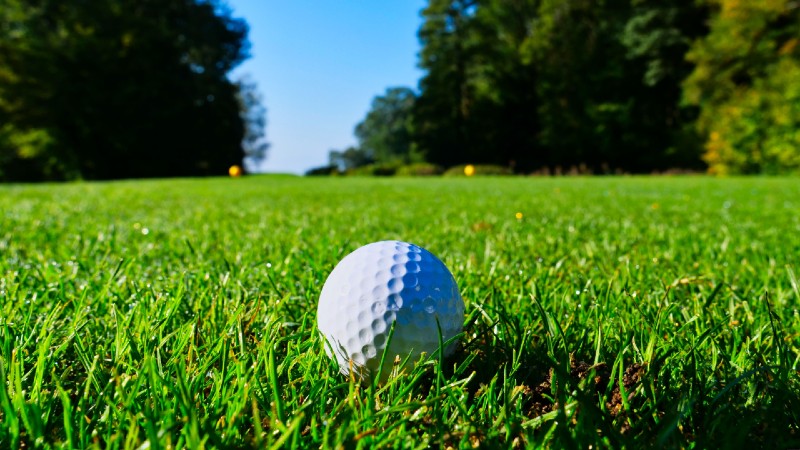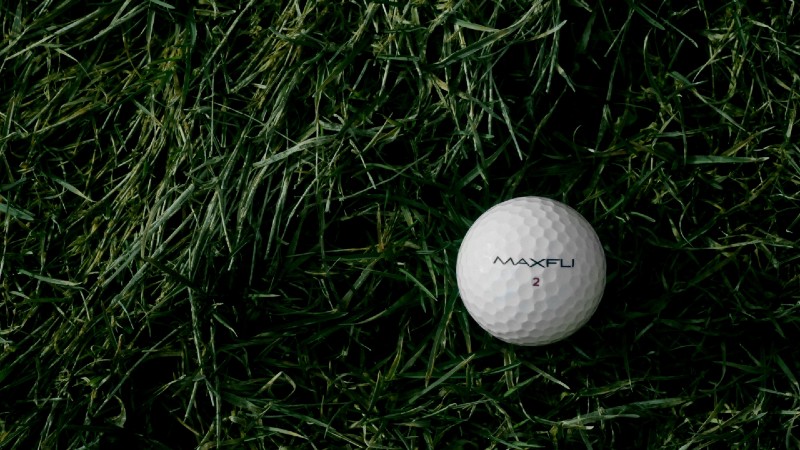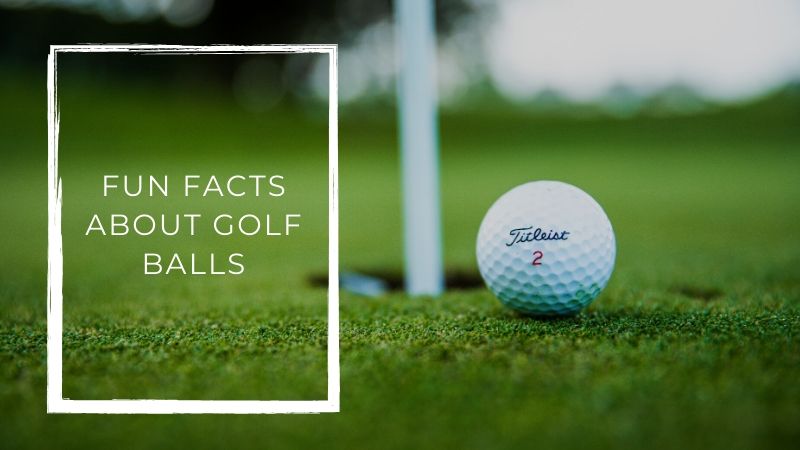If you are an avid golfer, you have probably hit thousands of golf balls with a good golf club during your golf career. You have probably spent hours smacking yellow range balls and have tried vast majority of brands of these balls. Do you have a collection of balls that you have saved over the years? Maybe logo balls from your favorite golf course or from hole-in-one.
The modern golf balls are both simple and complex. Let’s explore some interesting facts about golf balls.
You may also like:
- Best Golf Scope Rangefinders
- Bushnell Hybrid Laser Gps Rangefinder Review
- Best Bushnell Golf Rangefinder | Top 9 and FAQ
- Golf Terminology for Beginners: 102 Essential Golfing Terms
The Good Old Days
At the beginning, the first golf balls were made of wood. As early as the 1400s in Scotland, golf was played using balls made from hard wood like Beech. These balls were not perfectly round, so you can imagine the amount of curve produced in the Scottish winds.
On a side note, the modern tee was not invented until the late 1800s, so these wooden balls would be set on top of a small mound or sand or dirt. Quite often, each tee box had a container of wet sand that the player could use to mold a small hill to place their ball upon.
In USA, USGA The United States Golf Association (USGA) is the governing body for all things golf in America. It sets the rules and regulations of golf and works with local governing bodies to promote, grow, and protect the game of golf at both amateur and professional golfers.
Do you truly ever Own a Golf Ball?
You may buy the golf ball, but how long do you truly own it? For most professional golfers, their balls are a short-term possession. A major golf fact is that an89 average golfer loses 2 balls per round and there are an estimated 4+ million lost balls every day. The famous 17th hole at TPC Sawgrass claims 125,000 per year and that is one hole!
So where do they go? Well, many are found by other golfers and get to have a 2nd, 3rd, or 4th chance! We all know the joy of a golfer when he finds a “like new” ball that someone else lost. Are golf balls the most traded commodity in the world? Finders, keepers – losers, weepers.
What if they are never found? Depending on the type of golf ball, it will take 100 to 1,000 years for it to completely decompose.

Design of a golf ball
The design of a golf ball is also an important factor to consider when selecting the right ball for your game. The dimple pattern, cover material, and core compression using high gradient core technology, all work together to create a ball that will fly further distance and straighter with each shot. As such, understanding the features of different golf balls is key in ensuring you get maximum performance out of every swing.
The softer feel and high spin performance of a very fast golf ball are key factors to consider when selecting the perfect ball for your game. You should also pay attention to the ball’s construction and cover material, as well as its dual core compression and dimple pattern.
A softer ball compresses more easily on impact, leading to more control and accuracy. Harder balls are used in competitions and to hit drives farther.
A softer ball is easier to swing, while a heavier ball has more inertia and will travel farther when hit correctly. As a general rule, choose the lightest ball that you can control comfortably.
Why are the Pro golfer so Much better than you?
So yes, they have more natural talent and athletic ability. They most likely receive better coaching and instruction for the golf course. A better understanding of how to play the game? Definitely.
They also hit a lot more golf balls. The average professional will hit 500 golf balls per day in a golf course and that doesn’t count the time they spend chipping and putting. Typically practicing for 5-6 hours a day, 6 days a week and most golfers stick to this to get better.
Gravity is holding you back
We have all heard the story of astronaut Alan Shepard hitting a golf ball on the moon, but how far did it go? Physicists have estimated it traveled between 2 and 2.5 miles! Did I mention that he swung one-handed, with a 6-iron?
Compare that to the world record long drive on earth – Mike Austin’s 515-yard rip! Just think how long you would be without gravity getting in the way.
Do weather condition affect playing golf?
Yes, weather conditions can have a major impact on playing golf. Windy days can affect the flight of the ball, making it difficult to judge distance and accuracy. Cold weather can cause the ball to feel hard and heavy, making it more difficult for you to control. Hot temperatures can result in increased spin and decreased carry distance. Rainy weather can make the ball slippery and cause it to spin more upon impact. All of these elements have an effect on your game, so it’s important to consider them when choosing a ball or playing in different weather conditions.
The type of ball you choose should be based on the weather conditions. In windy conditions, a firmer ball with a low long game spin rate will help keep your shots straight and consistent. In cold weather, opt for a softer ball to ensure maximum compression and control. For hot days, choose a two-piece golf ball to maximize carry distance.
Why isn’t the Golf Ball Smooth?
One of the most interesting design principles related to the golf ball are the dimples. How many dimples does a golf ball have? You can find golf balls with anywhere from 300 to 500 dimples. The most common number of dimples is between 320 – 350.
A smooth ball would go about half as far. How do the dimples help the golf ball perform? Early players from Scotland identified that as balls got older, with scratches/dings on them, they would go further. The physics get complicated quickly, but suffice to say, the golf ball manufacturing process have developed the optimal dimpled balls pattern to help the ball get lift and stay in the air longer.

A Presidential Past Time
Many Presidents of the United States have enjoyed playing golf, but none were more dedicated than Woodrow Wilson. He famously painted some golf balls red or black, so he could still playing during the winter – when there was snow on the ground.
My Yellow Golf Ball goes Further!
No – it doesn’t. There is no evidence that the color of the ball impacts playability, so it comes down to personal preference. There are more options on the market than ever before. You can find white, yellow, orange, pink, purple, red, green, and occasionally black golf balls. Some players feel one color golf ball is easier to see than others, but that largely depends on weather conditions and/or grass/turf color.
The most recent addition is the “soccer ball” style that Callaway has produced. It can be interesting to watch the ball’s spin when you play on chips shots, but the ball performs the same as others. If you want your ball to make a fashion statement, you have plenty of choices.
What happens if you run out of balls? Ask Tiger
One of the craziest golf ball stories comes from Tiger Woods during his historic US Open win in 2000. Tiger woods ultimately won the event by 15 strokes, but did you know he almost got DQ’ed on the 72nd hole?
On Sunday, he hit his drive on the 18th into the water. He didn’t know this at the time, but he had only one ball left in his bag! If he had hit a 2nd drive in the water, he might have been disqualified from the event. Crazy to consider. There are options he could have taken that would have allowed him to finish the round with a two-stroke penalty, but an important lesson. Make sure you have enough golf balls to finish your round!
One additional rule to keep in mind. Some tournaments have a “one ball” rule, which means you can only play one type/model of ball throughout the event.
Do my Golf Balls need a Humidor?
Do golf balls degrade over time sitting in my closet? In the trunk of my car? In my golf bag?
Use common sense. Golf Balls can easily last for 10 years, assuming they are not stored in extreme temperatures. You don’t want to place your golf balls in a refrigerator or freezer. Your car trunk in the summer may be a bad idea as well; extreme heat can impact the balls performance.
Final thoughts; fun facts about golf balls
So there you go, there is some golf ball facts for you to impress your fellow golfers during your next round or even celebrating your success in the 19th hole. Do you have any other interesting tidbits of information? We’d love to here them, share them with all of us by dropping it in the comments. Happy swinging.

